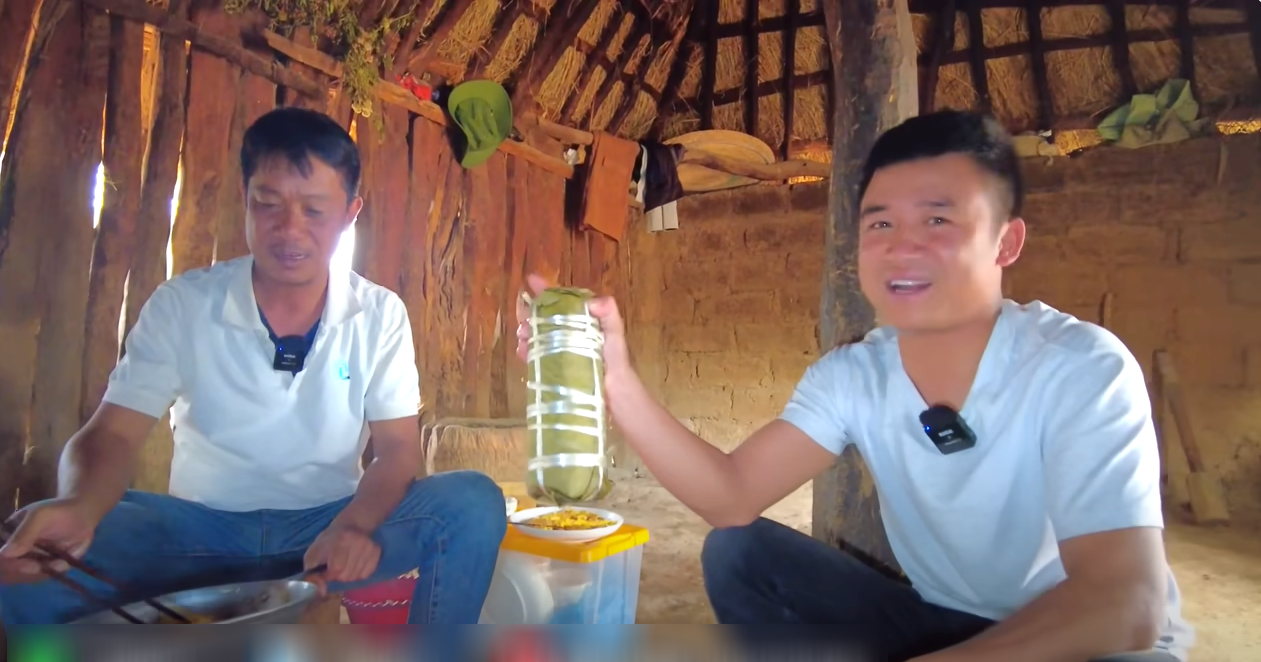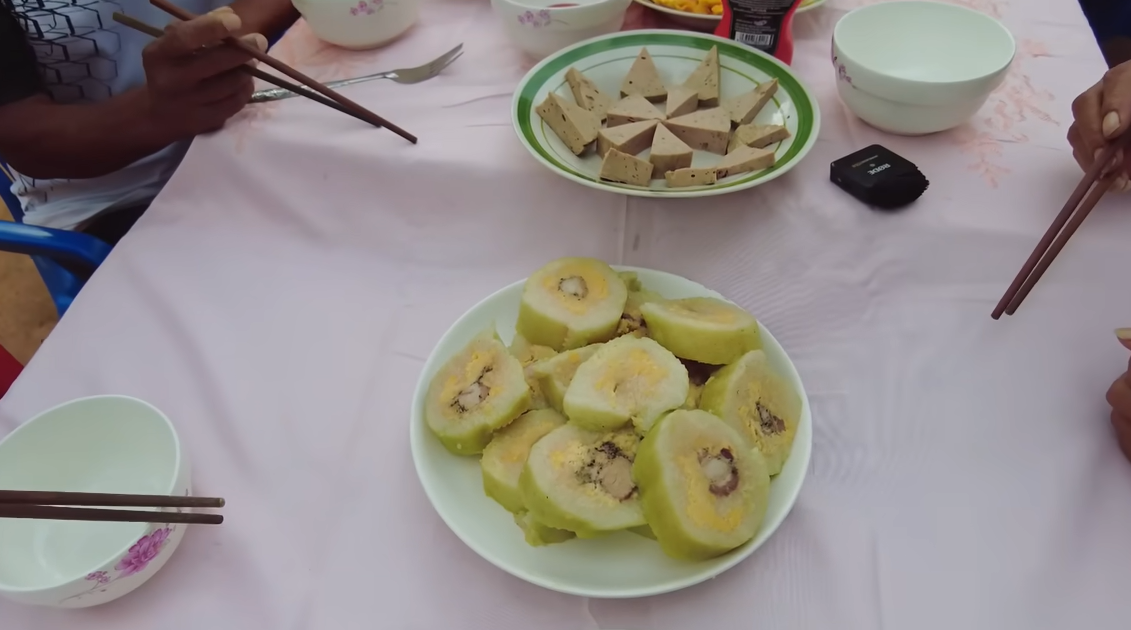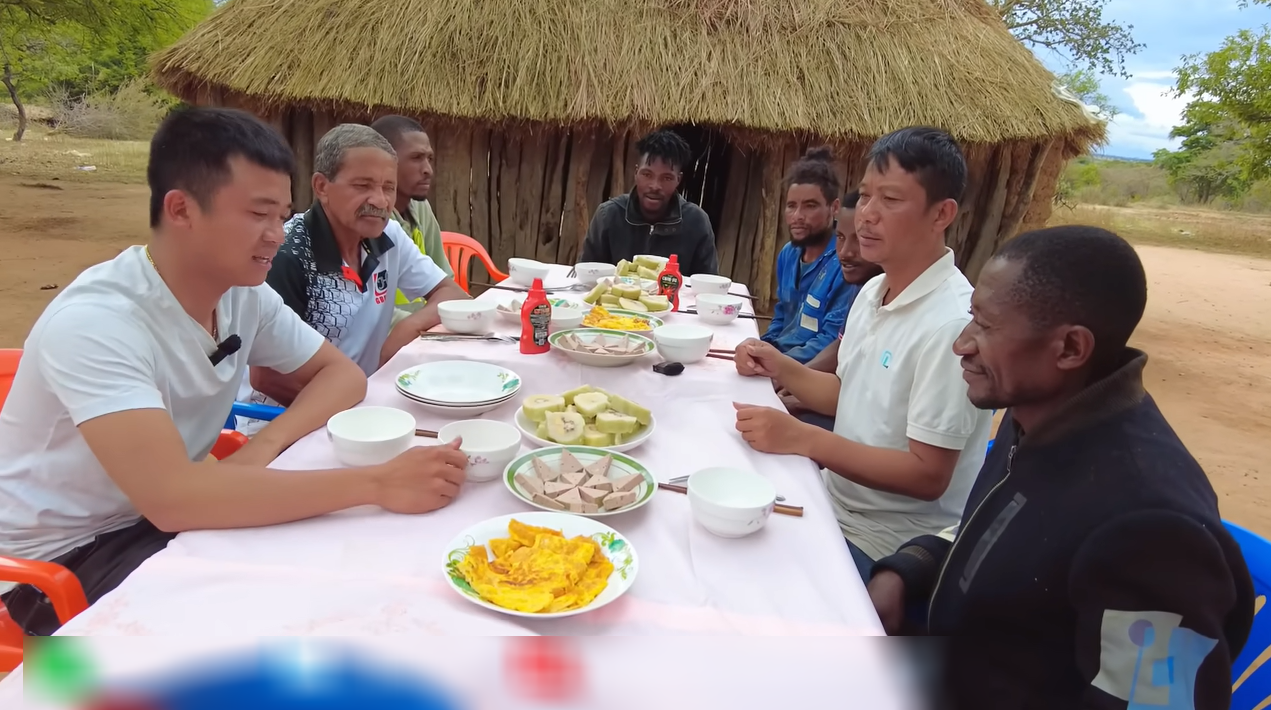For the first time, Africans had a chance to taste Vietnam’s traditional bánh tét (sticky rice cake). They praised its deliciousness but admitted its filling nature left them too full to enjoy more.
Cong Giap, a native of Nghe An Province, and his colleague Son Thach are long-time members of the team working with Quang Linh Vlogs in Angola.
In addition to helping locals cultivate crops, the duo often cook traditional Vietnamese dishes to introduce to the community. These include stir-fried chicken gizzards with beans, shredded pig ear salad, roast pork, chicken rice, grilled pork with rice noodles (bún thịt nướng), and beef stew with bread (bánh mì sốt vang).
In a recent video posted to their YouTube channel with over 624,000 followers, Cong Giap and Son Thach brought bánh tét to Maiala village. They offered it to the village priest, a Portuguese landowner, and several local residents.
Sharing bánh tét with the community
Son Thach explained that his family had recently held a memorial service, during which they made bánh tét. He made five extra cakes to share with the villagers and allow them to experience this Vietnamese delicacy.
The cakes were handmade and accompanied by traditional side dishes like pork sausage (giò lụa), chili sauce, and fried eggs.
Eager to have bánh tét after a long time, Cong Giap expressed his excitement, saying, “The cool, rainy weather is perfect for sticky rice dishes like bánh tét.”
According to Cong Giap, the chewy and aromatic cake is filling and suits the locals’ energy needs.
“Africans typically have large appetites, and this dish keeps them full for hours, providing plenty of energy for work,” he said.
To preserve the original flavor, Cong Giap and Son Thach served the bánh tét sliced thinly instead of frying it. The pork sausage was also plated and cut into bite-sized pieces.
After the preparations were complete, they invited everyone to sit at the table and explained the cultural significance of bánh tét during Vietnamese New Year.
“This is a traditional cake made from glutinous rice and wrapped in banana leaves. It pairs well with giò lụa, which is made from finely ground pork,” Cong Giap introduced.
Delight and a surprising fullness
The local priest, trying bánh tét for the first time, was intrigued. He admitted that he had never encountered anything like it before.
When asked about his experience, the priest nodded enthusiastically, saying, “It’s delicious! I’ve never had anything like this.”
However, he also admitted that the cake left him feeling surprisingly full after just a few slices.
“It’s so tasty but oddly filling. It looks like rice, but it’s even more satisfying than cornmeal or regular rice. I’d love to eat more, but I’m completely stuffed,” he shared.
Similarly, the Portuguese landowner described the bánh tét as chewy, fragrant, and visually appealing with its green banana leaf wrapping.
“This cake is perfect for me. It’s soft, chewy, and delicious. Even though I ate only a little, I already feel full. I could eat more, but since I’ve just recovered from an illness, I’ll hold back,” he explained.




Photos: Cong Giap Vlogs – Life in Africa